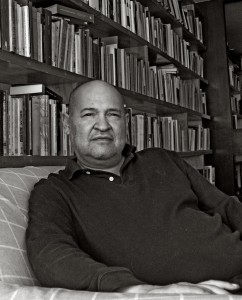
This is the introduction to a vocabulary list for reasonably advanced readers of the short novel Una de dos by Daniel Sada (Aguilar, Altea, Taurus, Alfaguara S.A., 1994). The vocabulary content emphasizes words and meanings unique to Sada’s writing about a rural community in northern Mexico, and is derived from a variety of sources (e.g., the Diccionario de la Lengua Española de la Real Academia Española, the Vox Spanish Dictionary, the WordReference collection of dictionaries and discussion blogs, and blogs and discussion groups seeking clarifications of word meanings).
Una de Dos is one of the most fascinating Spanish-language novels I have read. It clearly shows Daniel Sada as a master linguistic craftsman who writes meticulously in terms of the precision, beauty, and rhythm of his prose, the sensitivity in the development of his characters, and the lively humor he clearly reveled in with his exquisite choice of words laden with double meanings. In Rachel Nolan’s 2012 review of Sada’s penultimate novel, Casi Nunca, in the New York Times Sunday Book Review, she says:
If you read only three novelists on Mexico — and you should read many more, but that’s your affair — choose Juan Rulfo, Roberto Bolaño and Daniel Sada. Rulfo cleared the way for magic realism with “Pedro Páramo,” published in 1955, a decade before the Boom. Bolaño, a Chilean whose great subject was Mexico, asserted that realism itself was magic enough to support a novel, and his gangs of visceral realists and killers bore him out. Meanwhile Sada, who died last year, reveled in wordplay and mimicry in his Joycean celebrations of Mexico’s cowboy north…
Sada’s artistry as a writer was further illuminated in an interview he gave to José Manuel Prieto, which was later published in the winter 2006 issue of BOMB magazine. In his introduction to the piece, Prieto says:
… Of all the Mexican writers of my generation, Sada is the one I most admire, for his highly rigorous technique, the unequaled density of his prose, his steel-solid aesthetic sensibility… He is able to hold in his mind radically different models, alongside the most refined metric forms in the Spanish language, which he utilizes with the familiarity of a daily visitor… Many critics note his kinship with Juan Rulfo: the world he sketches, the violence running through it, the irascibility of his characters, but even that does not adequately explain the weight and cardinal importance of his work in contemporary Mexican letters…
Unfortunately, Daniel Sada died in 2011 at a relatively young age (58) after a long battle with kidney disease. He left a wonderful collection of novels, short stories, and poetry, which won him many prizes, including the Xavier Villaurrutia Prize (1992), the Jose Fuentes Mares National Literature Prize (1999), the Herralde Prize (2008), and the prestigious Mexican National Prize for Arts and Sciences in the Literature category (2011). Two of Sada’s novels – Una de dos and Luces artificiales – were adapted for the big screen by Mexican filmmaker Marcel Sisniega.
TC Rindfleisch
4/17/15

